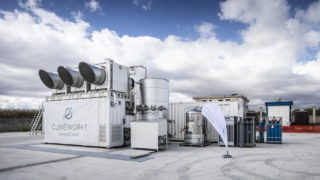-
Direct air capture technology expanding in Iceland as cost remains a barrier worldwide
Date posted:
-
-
-
Post Author
Patrick LaveryCombustion Industry News Editor
-
-
![]()
A Reuters article has given a useful potted overview of the status of the direct air capture industry, with a focus on the efforts of a Swiss-Icelandic venture to store captured carbon in geological formations. Switzerland’s Climeworks and Carbfix, a unit of Reykjavik Energy, are building eight carbon collectors, each around the size of a shipping container, which use fans to suck air into a capture process, then mix the captured carbon dioxide with water to create carbonic acid, which is pumped into basaltic rock. The companies’ experience to date is that within two years, 95% of the carbon dioxide becomes petrified, thus providing a dependable long-term storage solution. Scale and cost are problems, however, with the eight new collectors in Iceland to capture only 4000 tonnes/annum, and one company, Stripe, having announced last year that it would pay Climeworks US$775/tonne to remove 322 tonnes of CO2 from the atmosphere, an order of magnitude higher than costs for CCS facilities at industrial sites. A somewhat more optimistic sign on the cost front is industry talk of reaching a US$200/tonne milestone.
On top of this, companies such as Microsoft have said they will spend to remove as much carbon from the atmosphere as they have created since their inception, which seems likely to create a market for direct air capture, though on the face of it biofuels with carbon capture and storage may be a cheaper option of doing so. Still, as Carbfix chief executive Edda Sif Aradóttir argues, the world will need all available technologies to meet the climate challenge, and costs will surely fall further as deployment increases. For its part, Climeworks’ ambition is to be capturing 30-50 million tonnes/year by 2030, though one wonders if installations and/or demand will increase so quickly.

